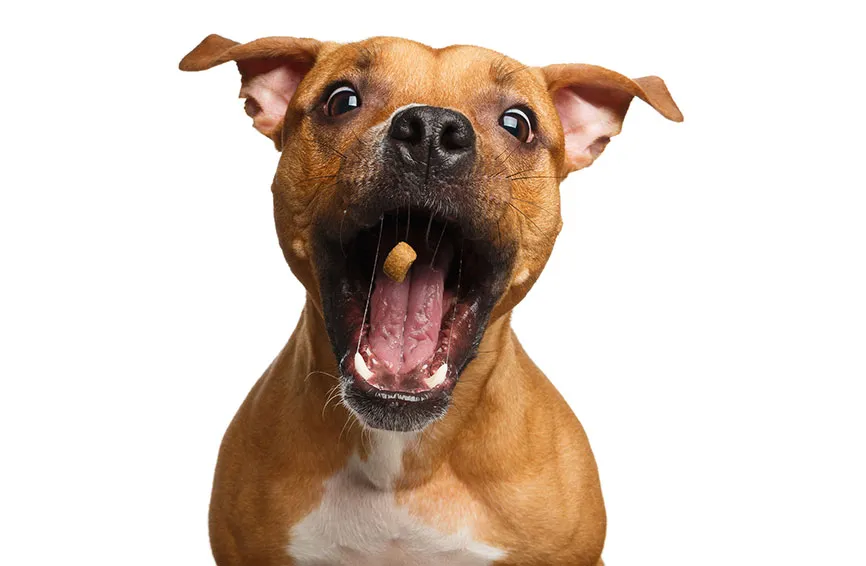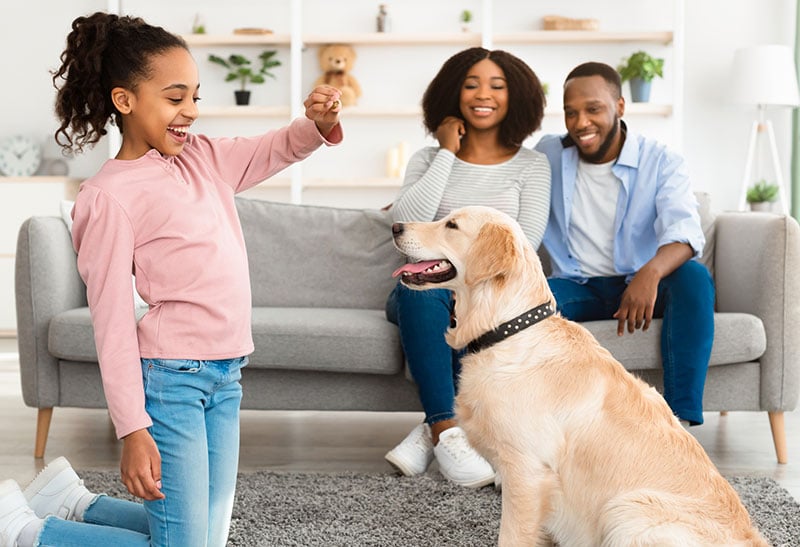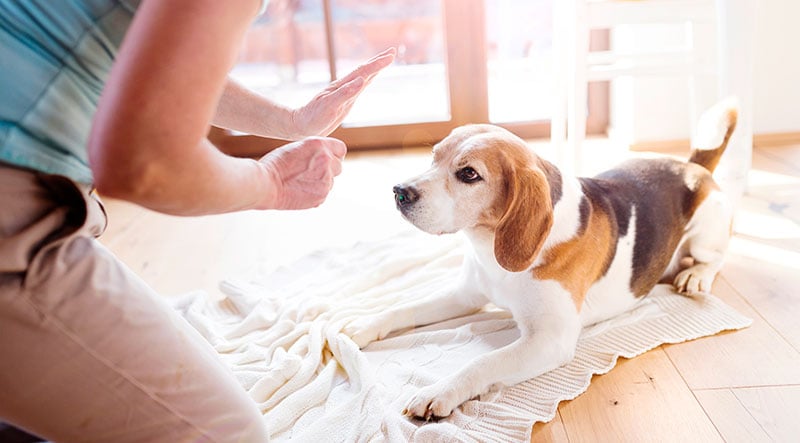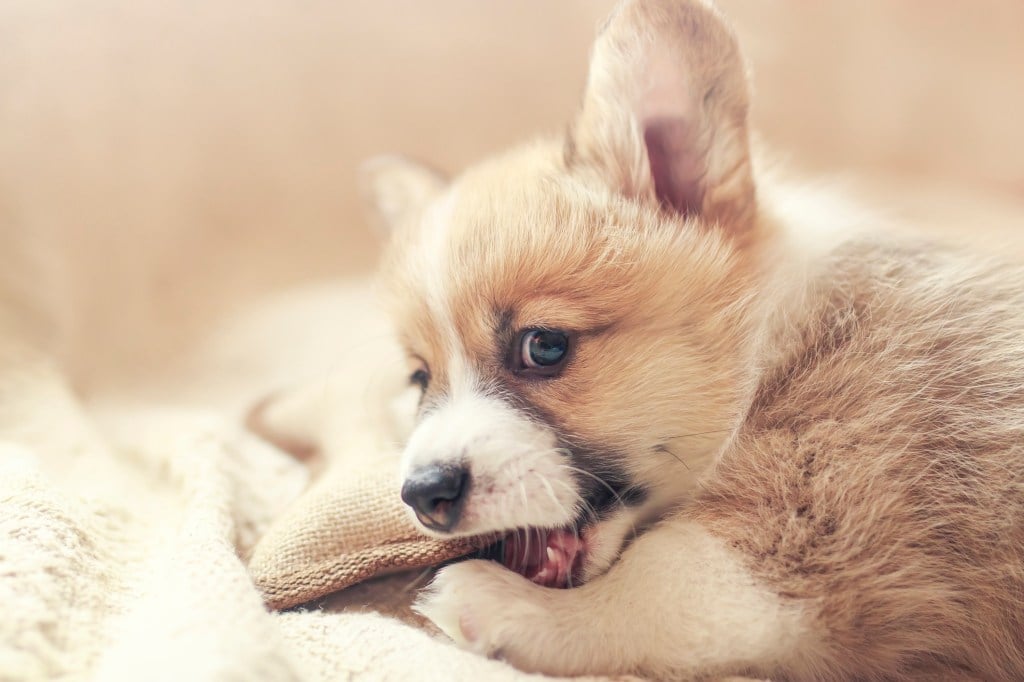Key Takeaways
- A high-value treat will be your dog’s favorite. They should also be small to avoid weight gain and portable so you can always have some handy.
- Use a high-value treat when you really need to get your dog’s attention or are doing challenging training.
- You can determine what your dog values as a treat based on their reaction, or play a game where they choose among a selection of morsels.
Table of Contents
There are an overwhelming number of options when choosing treats for your dog. Most dogs love any treat and will happily eat it, but sometimes you want an extra special goodie to get your dog to do what you want when training or teaching a new skill.
We call these distinctive morsels “high-value” treats because they are super motivating for your dog.
A high-value treat will be your dog’s favorite. They should also be small to avoid weight gain and portable so you can always have some handy.
When to use a high-value treat
During training, a high-value treat makes a huge difference in your dog’s attention span and motivation. Here are some situations where they are useful:
- Dog is triggered – If a dog is in a situation that usually triggers them to feel nervous, as you calmly lead them away, using an extra yummy treat can help them focus on you and calm down faster and reset.
- Nervous with new people – If your dog is anxious when meeting someone new, once they have the courage to approach your guest, have your visitor hold a high-value treat in their hand, palm up (to make it easier to grab). It can help encourage them to associate visitors with a positive reward gradually.
- Lack of self-control when seeing people/dogs on walks – If your dog tends to get overly excited when seeing other dogs or people and you want to encourage them to stop pulling you over to say “hi,” teach them to “Leave It” with a delicious treat and praise. This is often enough motivation to help them learn more self-control.
- Stop chasing critters or eating gross things on walks – If you want to teach your dog not to chase chipmunks, pick up goose poop or anything else during your walks, say “Leave It” paired with a high-value treat. Remember critters and goose/deer poop equal food to your dog, so a high-value treat reminds them that you provide the food; they don’t need to hunt for it.
- Have selective hearing when you call them – If your dog ignores you when you call them, using a whistle paired with praise and a high-value treat can be a game-changer.
How to find that high-value treat or reward
Every dog is different, so it may be time to discover your dog’s favorite snack. Ask for various samples or purchase different treats at your local pet store. Most employees are aware of other customers’ favorite dog treats, which will give you a good start.
Here are some of the types of commercially available treats:
Cookie-style treats
Oven-baked biscuits aren’t usually the best option, as they are dry and aren’t particularly flavorful. Think of them like eating a pretzel rather than your favorite appetizer. You’ll eat the pretzel if that’s all that’s available, but it’s the more palatable appetizer you’ll look forward to eating. High-value treats must be something mouth-watering that is a special treat for your dog, not something they expect for every trick. Also, these biscuits tend to be larger and add up to too many calories if you are doing a lot of training.
Meat flavored options
Most dogs love red meat, white meat, and fish options. Many jerky-type treats are extra smelly and, therefore more motivating for your dog. Ask for samples of lamb lung, tripe, salmon, chicken, beef, turkey, bacon, rabbit, and buffalo, to name a few. You’ll want to try many options to know which your dog prefers.
How to test the treats to find their favorite
Watch their response during training
Pick a training topic that your dog usually struggles with, preferably not something stressful, but where they exhibit a lack of self-control or simply ignore you. Let’s use lack of recall, for example. If they tend to ignore you when you call them to you, first use the new tasty treat for something simple, like “sit”, before you take them outside. Once they are distracted, call them to you, and if they come when called, praise them and give them the same treat. What do you notice? Was their recall response better or the same as before? Note this to keep track of the treats and your dog’s response. Later that day, practice recall again with the same treat.
Work on the same training topic several times a day, using a new treat each day, and this will give you a clear idea of how high-ranking each treat is.
Let their nose tell you
You will need plastic cups, a permanent marker, and the treat samples.
- Label each cup with the name of the treat.
- Take one treat and put it under a plastic cup.
- Repeat until all treat options are hidden.
Watch your dog find the treats and notice the order they found them in. Dogs will usually hunt for the most appetizing treats first.
Limit the high-value treats for more challenging training
Once you’ve found their favorite, the use of the high-value treat is selective and sparing. If your dog gets it all the time, it will lose some of its value and won’t be as motivating. Use it for whatever your dog struggles with most and always with friendly, positive encouragement as your dog learns. As your dog has more self-control and responds consistently to you, still offer verbal praise and decrease the number of treats you give.
Make treats last and prevent weight gain
Some high-value treats can be pricey, so remember that you don’t have to give them the whole treat each time you reward their behavior. Most treats can be broken by hand, scissors, or cut with a knife. This will help your pocketbook and prevent them from gaining weight.
If you go out of your way to buy your pets high-value treats then you must really love them. To make sure they are protected against unexpected illnesses and accidents, consider dog or cat insurance. If you’re not already a part of our pack, start by getting a free quote.










